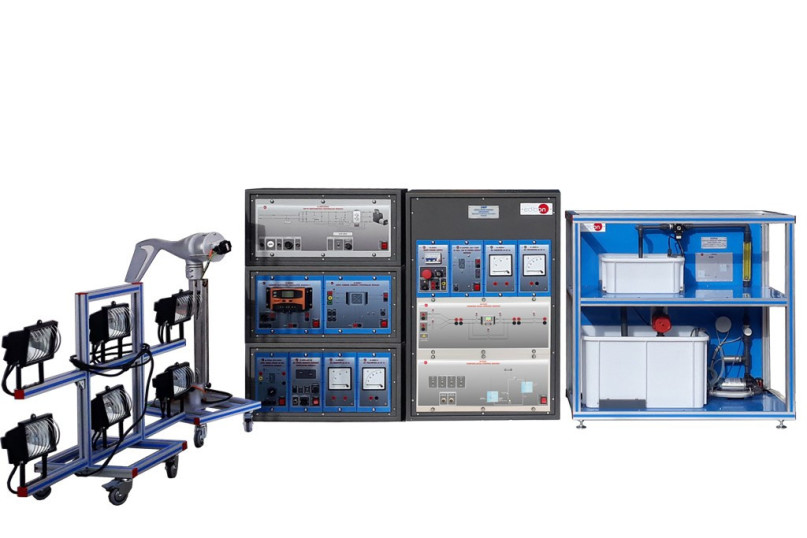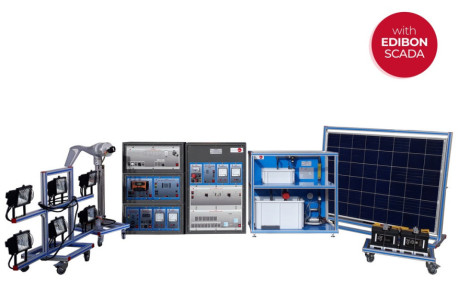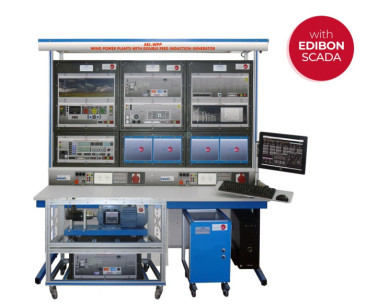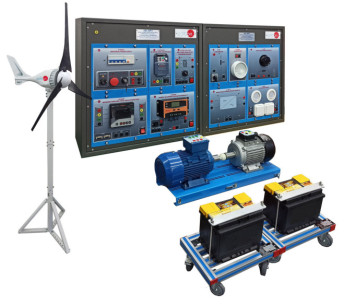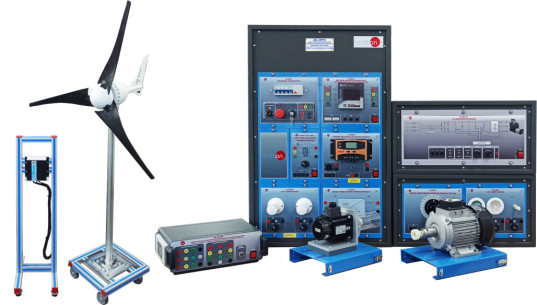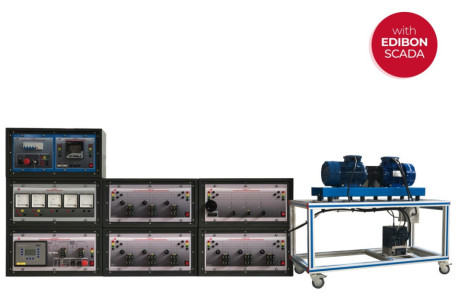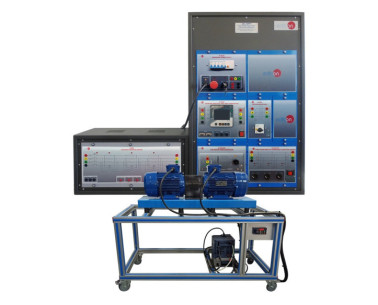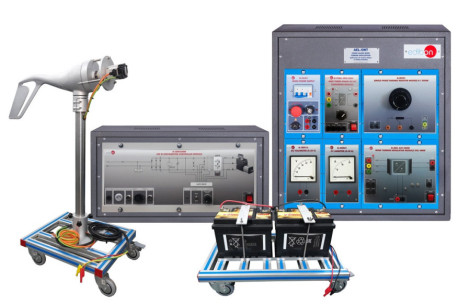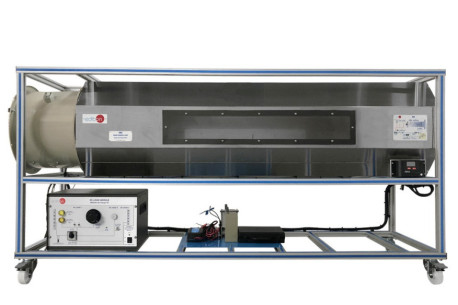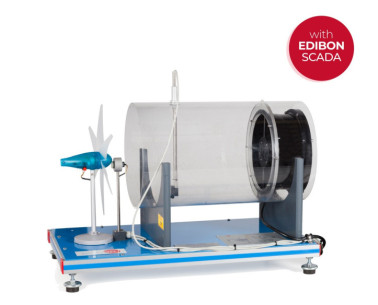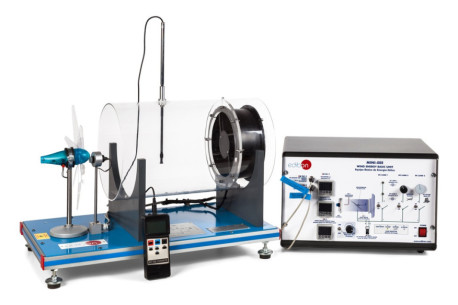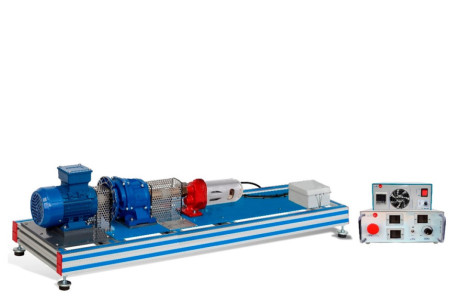The Water Pumping Application, "SWP", has been designed by Edibon to show the user the basic principles of operation of pumping equipment in isolated networks, exposing in a didactic way the elements involved in the process of generation and pumping. For this purpose, this unit consists of two water tanks positioned at different levels, both tanks are communicated by means of a pump and a PVC pipe to reproduce the same conditions as a real pumping system.
One of the peculiarities of this equipment is that it has a manual valve that allows the user to control its opening level. This allows the generation of different manometric pressures at the pump outlet, that is, to define different pumping heights of the installation. Thus, once the user configures the manometric pressure of the installation, the water can be pumped by means of an impulse pump from the lower tank (ground water) to the upper level tank (storage tank).
The pumping unit has an industrial pumping regulator specially designed to optimize the energy available for pumping. In hours when solar radiation is minimal, the regulator works on optimizing the current-voltage (I-V) curve to extend the total hours of water pumping. Likewise, the student will be able to analyze the operation of these devices and the interest of their installation in systems of these characteristics, in order to adjust the voltage to the nominal operation of the pump.
In addition, the unit includes a series of sensors, actuators and indicators to achieve a correct supervision of the installation: flow meter and pressure gauge at pump outlet, stop at maximum level of the upper tank to prevent water overflow, emergency stop at minimum level of the lower tank to prevent the pump from running, various indicators of pump operation and operating switches.
With the multimeters included in the equipment, the user can view at all times the values of voltage and current at the input and output of the regulator.
In addition, it is recommended to acquire together with the "SWP" unit the photovoltaic panel, the wind turbine, the batteries and their corresponding current regulators to demonstrate how a real pumping system works in an isolated network.
In order to acquire a wide knowledge, a specific manual is included in which it is explained, at a theoretical and practical level, the aspects related to photovoltaic and wind water pumping systems, the pumping and irrigation systems (deepening in the architecture of the different equipments), energy flow analysis and the dimensioning of a solar pumping installation.
 クッキーの設定
クッキーの設定

